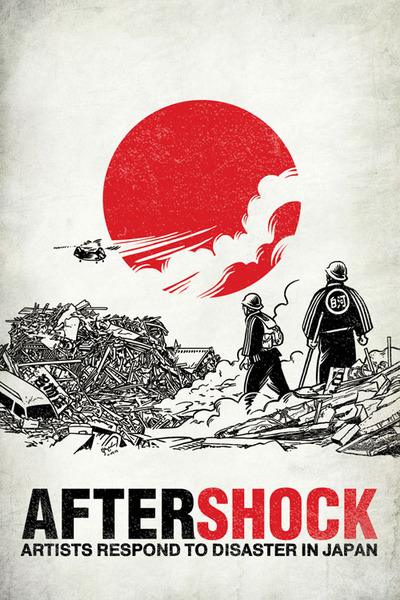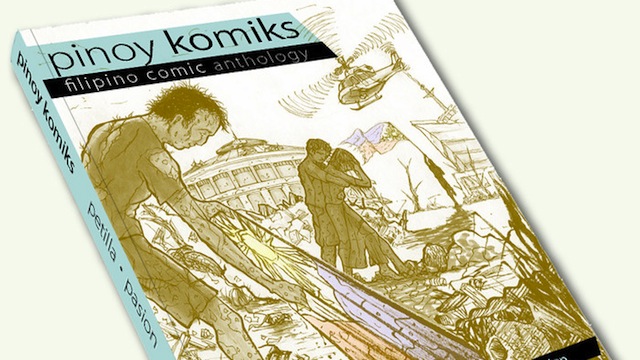SUMMARY
This is AI generated summarization, which may have errors. For context, always refer to the full article.
MANILA, Philippines – When most people think of comics, they do not usually think of them as vehicles for positive social change. Adam Pasion, a Filipino-American and California native now living and working in Japan, wants to change all that.
Pasion, along with co-editor Zon Petilla, is putting together an anthology titled “Pinoy Komiks: Filipino Comic Anthology.” The anthology will feature some of the best cartoonists in the world, both Filipino and non-Filipino, and their work “inspired by Filipino culture, history, and folklore.”
Pasion is currently running a Kickstarter campaign to raise funds for the project, which has already achieved its initial $3,000 goal and is now aiming for stretch goals. All money earned from the sale of the book will be donated to Typhoon Yolanda (Haiyan) relief efforts.
Regarding his goals for the anthology, Pasion said, “I heard it put really well by another charity – our goal is not to be the first responders – it is to be the last responders. We want to be there when everybody else has moved on. That is why I think a book like this is useful because hopefully it will continue to sell for years to come.”
Pasion continued, “We might not be able to give a bunch of money right up front, but we can continue sending money as long as the books keep selling. In the case of Aftershock, we were able to give several thousand dollars to rebuilding efforts over the course of three years. I think this makes a difference as funds don’t get bottlenecked or misappropriated.”

The Japanese precedent
The Aftershock that Pasion mentions above is a reference to the anthology that he edited in support of the relief efforts for the 2011 earthquake in Japan.
Pasion recounted, “I had lived through my share of earthquakes in California, but I had never seen a disaster on that scale before. It haunted me. I felt strangely guilty being so close and yet unable to do anything to help. I didn’t have any medical expertise, or engineering skill, and I began to feel like being a cartoonist was a worthless skillset.”
Luckily for comic enthusiasts everywhere, Pasion had an epiphany. “Then I realized it didn’t have to be. I thought perhaps I could use what I know and the people I know to help out, and very quickly that started unfolding into what later became my first Kickstarter project: a charity book called ‘Aftershock: Artists Respond to Disaster in Japan.’”
Other cartoonists shared Pasion’s – appropriately enough – passion. He said, “I sent off a bunch of emails to all the creators I knew and asked them to send the beacon out to all their friends and collaborators. Soon we had something like 35 contributors from 5 separate continents. The response was overwhelming.”
After eventually raising thousands of dollars for the relief efforts, the project had made a lasting effect on Pasion. He said, “The Aftershock project really changed my attitude about comics in general. I realized the power of the medium and also people’s love for the medium to grab people’s attention and focus it on real world problems. Since then it has been a big goal of mine to use the medium of comics to affect social change.”
Crowdfunding for change
As much vision as a social entrepreneur has, sometimes it’s just not practical to pay for the entirety of a project or campaign out of pocket. In these cases, it may behoove social entrepreneurs to consider fundraising through a crowdfunding platform like Kickstarter.
What struck me when speaking to Pasion about running a successful crowdfunding campaign was how thorough his thinking was. In other words, he wasn’t relying on the cause to sell the campaign (and in fact, Kickstarter forbids direct mentions of donating proceeds to a cause). Instead, he approaches each campaign with the savvy of a seasoned entrepreneur.
For example, take his advice on setting up reward tiers. For those not familiar with Kickstarter, backers – the people who contribute money to a project – are given a reward or set of rewards for doing so. The higher the contribution, the better the reward should be.
Reward tiers can make or break a crowdfunding campaign, but Pasion has developed a system that has consistently worked for him. “In my experience the most popular rewards are at or around $25,” Pasion said. “That is an amount that most people feel okay about letting go of without worrying too much about it. I try to offer something in that range that people will feel is worthwhile.”
Pasion went on, “Then I work from there. I like to have the next tier be something that is enticing, for only a little bit more, that way people are inclined to go a little bit out of their comfort zone. For example on this project now we have a book with their name in it for $20 but for just $10 more they get original artwork.”
On the lower end of the spectrum, Pasion said that he likes to “always offer something for about $1 or $5 because it takes no commitment, but those little pledges are important for a few reasons. First of all, projects with a lot of activity get noticed by the Kickstarter algorithms and it helps our project get noticed. Also, those people have the option of telling their friends which gets the word out for us.”
And on the higher end of the spectrum, Pasion likes having “something really personal that takes a lot of hard work on my part to offer those people. That is why on this project we are offering to collaborate on a one page comic with the backers to be included in the final book. It is something really special that they can show to their friends.”
In describing all the thinking that even goes into just setting up reward tiers, Pasion also likes to caution other entrepreneurs who may be considering crowdfunding. “I tell people all the time that Kickstarter is not a free lunch – in fact it is a ton of work. Many people I know who have had a successful Kickstarter found the process so tough they never tried it again. Tending to the project, fulfilling rewards, getting in touch with backers, and all of those things take a tremendous amount of attention and organization.”
The Internet’s potential
Once a person backs his crowdfunding campaign, Pasion makes the process as personal as possible. He said, “For me, making it personal means sending each backer a personal thank you message with details about them that shows it is not a stock response. I try to get to know the backers. It has led to some actual friendships outside of Kickstarter!”
Personalizing a campaign, of course, is not for the faint of heart. Pasion said, “It takes a lot of attention – like tending a garden. Everyday I try to email all the new backers one by one, and every other day post an update with art samples. When the funding is finished I make lots of progress reports, which I think reassures the backers that everything is moving smoothly.”
His rationale for this kind of approach is simple, yet insightful. “It makes the whole project more meaningful to them, and to the creators as well. I try to imagine if this was not an online platform. If somebody came up and gave me $100 I would make sure to remember who they were and let them know how much I appreciated it, and as an extra incentive I would involve them in the project.”

Once Pinoy Komiks is funded on Kickstarter, Pasion and Petilla will efficiently move the book toward a May 2014 publication. In doing so, they will have effectively taken support of hundreds of cartoonists and supporters and cohered it into the final form of a published book.
Still, Pasion is demure about his success as a cartoonist, an editor, and a social entrepreneur. Instead, he likes to use the example of Pinoy Komiks as a reminder of all the potential that the Internet offers.
Pasion said, “I don’t have to say this to rappler.com readers who already have their finger on the pulse, but the Internet is truly an amazing tool to enable creativity and collaboration. It seems a shame that so many people squander those chances.”
In telling proof of that, he added, “I have never met anybody involved on this project face to face, and that includes the co-editor Zon. I connected with half of the contributors via email, half through social media. We spread news of the campaign through Facebook communities and Twitter, we funded it through an online crowdfunding platform. Truly anything is possible if people decide to use the Internet to it’s full potential.” – Rappler.com
Rappler business columnist Ezra Ferraz graduated from UC Berkeley and the University of Southern California, where he taught writing for 3 years. He now consults full-time for educational companies in the United States. He brings you Philippine business leaders, their insights, and their secrets via Executive Edge. Follow him on Twitter: @EzraFerraz
Add a comment
How does this make you feel?
There are no comments yet. Add your comment to start the conversation.